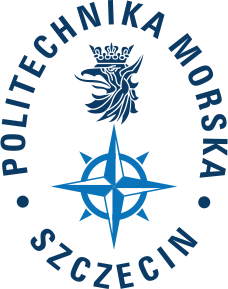Scientific publications Tadeusz Szelangiewicz
Title: Application of Measurement Sensors and Navigation Devices in Experimental Research of the Computer System for the Control of an Unmanned Ship Model
Author/Authors: Szelangiewicz T., Żelazny K., Antosik A, Szelangiewicz M.
Place of publication: SENSORS
Year: 2021
Keywords: autonomous unmanned vessel (MASS), computer control system, measuring sensors and navigation devices, model tests of unmanned vessel in open water, recording of movement parameters and images from lidars and cameras
Abstract: Unmanned autonomous transport vessels (MASS) are the future of maritime transport. The most important task in the design and construction of unmanned ships is to develop algorithms and a computer program for autonomous control. In order for such a computer program to properly control the ship (realizing various functions), the ship must be equipped with a computer system as well as measurement sensors and navigation devices, from which the recorded parameters are processed and used for autonomous control of the ship. Within the framework of conducted research on autonomous ships, an experimental model of an unmanned ship was built. This model was equipped with a propulsion system not commonly used on transport vessels (two azimuth stern thrusters and two bow tunnel thrusters), but providing excellent propulsion and steering characteristics. A complete computer system with the necessary measuring sensors and navigation devices has also been installed in the model of the ship, which enables it to perform all functions during autonomous control. The objective of the current research was to design and build a prototype computer system with the necessary measurement sensors and navigation devices with which to autonomously control the unmanned ship model. The designed computer system is expected to be optimal for planned tasks during control software tests. Tests carried out on open waters confirmed the correctness of the operation of the computer system and the entire measurement and navigation equipment of the built model of the unmanned transport vessel.
Website address (link) to the full text of the publication: https://www.mdpi.com/1424-8220/21/4/1312
DOI: 10.3390/s21041312
Title: Unmanned ships – maritime transport of the 21st century
Author/Authors: Szelangiewicz T., Żelazny K.
Place of publication: Scientific Journals of the Maritime University of Szczecin
Year: 2020
Keywords: Unmanned, remotely operated and autonomously ships, levels of autonomy, emission- free propulsion technical, legal and administrative problems, construction and testing of an unmanned vessel
Abstract:
Website adUnmanned, remotely or autonomously ships are the fastest growing new technology in maritime transport in recent years. The design of unmanned vessels envisions clean, emission-free electric propulsion. The costs of building physical models and target vessels are high, but the expected benefits are generating increasing interest in such vessels. This article presents the current state of research in the field of unmanned ships and the technical, legal and administrative problems that need to be solved in order for these ships to be used by the general public.
Website address (link) to the full text of the publication: http://repository.scientific-journals.eu/handle/123456789/2651
DOI: 10.17402/449
Title: Hydrodynamic characteristics of the propulsion thrusters of an unmanned ship model
Author/Authors: Szelangiewicz T., Żelazny K.
Place of publication: Scientific Journals of the Maritime University of Szczecin
Year: 2019
Keywords: experimental model of an unmanned ship, propulsion system, hydrodynamic characteristics of propellers, azimuthal propeller, tunnel thruster, measurements of propeller characteristics
Abstract: In this paper, an experimental model has been developed to study an unmanned ship. Two aft azimuthal propellers and two bow tunnel thrusters were used to propel the ship. In order to develop algorithms and a computer program to control the model, it is necessary to determine the hydrodynamic characteristics of the propellers installed in the model. The propellers are very small; therefore it is impossible to use approximate methods of calculating the thrust of the ship’s propellers. The characteristics of the thrust of the propellers installed in the model were measured experimentally. This paper has given a description of the test stand and the results of the measurement of the thrust forces of the propellers installed in the model of an unmanned ship.
Website address (link) to the full text of the publication: http://repository.scientific-journals.eu/handle/123456789/2627
DOI: 10.17402/428


